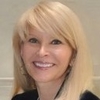Sect. 112 Indefiniteness in Chemical and Biotech Patent Claims
Drafting and Prosecuting Patent Claims That Will Hold Up Under Any Definiteness Standard

Course Details
- smart_display Format
On-Demand
- signal_cellular_alt Difficulty Level
- work Practice Area
Patent
- event Date
Thursday, July 1, 2021
- schedule Time
1:00 p.m. ET./10:00 a.m. PT
- timer Program Length
90 minutes
-
This 90-minute webinar is eligible in most states for 1.5 CLE credits.
This CLE course will guide patent counsel on how recent Federal Circuit and Patent Trial and Appeal Board (PTAB) case law impact daily patent practice. The panel will offer best practices to navigate pre- and post-issuance scrutiny for compliance with 35 U.S.C. 112(b).
Faculty

Dr. Murphy focuses her practice on client counseling and patent prosecution for a range of clients. She prepares new patent applications, prosecutes U.S. and foreign applications, and represents applicants at appeals and oral hearings before the PTAB. She has experience in prosecuting inter partes and ex partes reexamination applications, reissue applications, and patent term extension applications for approved pharmaceuticals, including obtaining supplemental protection certificates in Europe.

Ms. Burgy focuses on opinion work, client counseling, patent prosecution and management, and litigation in the chemical, pharmaceutical, and biotechnology arts. She counsels her clients on a diverse range of patent issues. She assists clients on single-patent issues as well as complex matters involving multiple patents and applications requiring ongoing advice on patent portfolio strategy and development, with an eye towards litigation. She has assisted clients in the early stages of development through due diligence and patent portfolio analysis.

Mr. Irving has 47 years of experience in the field of IP law. His practice includes due diligence, patent prosecution, reissue and reexamination, patent interferences, and counseling, including prelitigation, Orange Book listings of patents covering FDA-approved drugs, and infringement and validity analysis in the chemical fields, as well as litigation. He has served as lead counsel in many patent interferences.

Mr. Barker has a diverse practice, including interferences, post-grant proceedings, patent prosecution, arbitration, opinions, due diligence, and strategic counseling. He focuses in the areas of biotechnology, pharmaceuticals, and diagnostics. In his patent prosecution practice, he prepares patent applications and responses to office actions, represents clients in reexamination and reissue proceedings, and prepares briefs to the appeal board. He has also prepared numerous validity and infringement opinions and represented clients in due diligence investigations.

Ms. Knowles provides global guidance on complex IP matters, patent litigation strategy and assistance, licensing, patent prosecution, opinions, obtaining and protecting the full value of innovation, investor support and monetization of assets. She is an intellectual property attorney with 30 years of experience in global corporate and private practice. She has acted as an expert witness on licensing matters in several disputes involving large pharmaceutical companies. From 2006-2010, she was the Senior Vice President and Chief Patent Counsel at GlaxoSmithKline, where she served as the worldwide head of patents for all litigation and transactional matters.
Description
In January 2021, the USPTO issued binding guidance aligning the approach taken by the PTAB with the approach of the federal courts on indefiniteness.
Definiteness of claim language must be analyzed not in a vacuum, but in light of (1) the content of the particular application disclosure, (2) the teachings of the prior art, and (3) the claim interpretation that would be given by one possessing the ordinary level of skill in the pertinent art at the time the invention was made. Nautilus, Inc. v. Biosig Instruments, Inc., (U.S. 2014).
Post-Nautilus Federal Circuit case law continues to develop. The court upheld the claims in Eli Lilly and Co. v. Teva Parenteral Medicines Inc. (Fed. Cir. 2017) under the Nautilus standard ("a person of ordinary skill in the art would understand the scope of the claim term 'vitamin B12' with reasonable certainty.") In IBSA Institut Biochimique, S.A. v. Teva Pharms. USA, Inc. (Fed. Cir. 2020), the Federal Circuit, however, affirmed that the term "half-liquid" was indefinite; here, "the intrinsic and extrinsic evidence fail to inform, with reasonable certainty, those skilled in the art about the scope of the invention." Practitioners should try to avoid claim language that could raise questions about “reasonable certainty” under 35 U.S.C. §112(b). Undefined terms that do not have well-established meanings in the art, such as “half-liquid” in this decision, are the types of claim language that could raise questions regarding indefiniteness.
In Nevro Corp. v. Boston Scientific (Fed. Cir. 2020), the Federal Circuit applied the "reasonable certainty" test, holding that the claim limitation "paresthesia-free" did not render the method, system, or device claims indefinite. The court noted defining a term functionally does not make it indefinite. The Federal Circuit also noted "the ambiguity inherent in functional terms" may be resolved where the patent "provides a general guideline and examples sufficient to enable a person of ordinary skill in the art to determine the scope of the claims." Does functional-claiming language then provide a path for life science claims struggling with Sec. 112 indefiniteness (and 101 subject matter eligibility)?
In the wake of Teva Pharms. v. Sandoz (U.S. 2015), multiple measurement methods without sufficient direction on how to determine infringement continue to trip up patent applicants. See, e.g., Pac. Coast Bldg. Prods. v. CertainTeed Gypsum, Inc. (Fed. Cir. 2020). Relative terms and ranges without end points also pose a challenge but should not block patentability if the Nautilus reasonable certainty test is met. This may require more effort into arguments as to what one of ordinary skill in the art would understand to try and show the scope of the invention is reasonably certain.
We will also discuss developments at the PTAB concerning indefiniteness and claim construction. Now, according to Samsung Elecs. Am., Inc. v. Prisua Eng'g Corp. (Fed. Cir. 2020), a prior art-based unpatentability analysis may be possible for an indefinite claim. Prior to Samsung, the PTAB decisions were inconsistent, sometimes deciding that the indefiniteness of a claim prevented reaching an anticipation and/or obviousness analysis.
Listen as our authoritative panel of patent attorneys discusses the impact of recent Federal Circuit and PTAB case law on your daily U.S. patent practice, whether you are preparing a patent application, prosecuting a patent application, litigating a U.S. patent, including before PTAB, conducting an FTO, or evaluating a third party’s U.S. patent as part of due diligence. The panel will offer best practices to navigate pre- and post-issuance scrutiny for compliance with 35 U.S.C. 112(b).
Outline
- Understanding 35 U.S.C. 112(b) ("indefiniteness")
- Post-Nautilus case law
- Best practices for drafting and prosecuting strong patent claims that will hold up in litigation and before PTAB under any of the definiteness standards
Benefits
The panel will review these and other key issues:
- What possibilities does functional claiming provide?
- What steps can counsel take to increase the likelihood that patent claims will survive litigation and PTAB review?
Unlimited access to premium CLE courses:
- Annual access
- Available live and on-demand
- Best for attorneys and legal professionals
Unlimited access to premium CPE courses.:
- Annual access
- Available live and on-demand
- Best for CPAs and tax professionals
Unlimited access to premium CLE, CPE, Professional Skills and Practice-Ready courses.:
- Annual access
- Available live and on-demand
- Best for legal, accounting, and tax professionals
Related Courses

Patent Design Arounds for Both Utility and Design Patents: Minimizing Risk of Infringement, Reducing Likelihood of Competitor Design Arounds, and Maximizing the Chances of Covering Competitors’ Attempted Design Arounds When Preparing a Patent Application
Wednesday, May 28, 2025
1:00 p.m. ET./10:00 a.m. PT

Patent Infringement: Structuring Opinions of Counsel
Friday, May 23, 2025
1:00 p.m. ET./10:00 a.m. PT

Means-Plus-Function Patent Claims Following Xencor: Preamble, Written Description, and More
Thursday, May 15, 2025
1:00 p.m. ET./10:00 a.m. PT